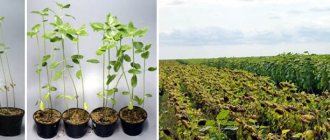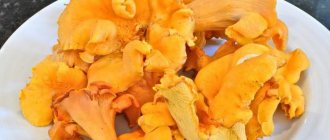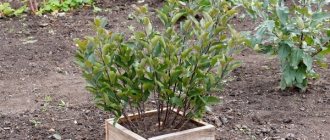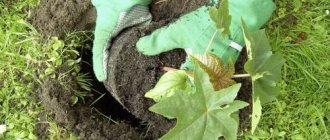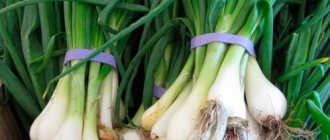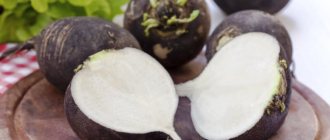What it is?
First of all, you need to decide what seed germination actually is. This term means the relationship between the total number of seeds and those that sprout under certain conditions. Relatively speaking, if you take 100 individual carrot seeds (or another plant - germination is calculated for any crop), placed in suitable conditions and when counting, find out that 87 of them have sprouted - this means that specifically for this batch of seeds the germination rate is 87%.
In addition, when determining germination, we take into account:
- Conditions under which the seeds germinate.
- The time period during which they formed seedlings.
Both for each individual crop during industrial cultivation are determined by GOST.
What does germination mean?
Seed germination is the possibility of sprouts emerging from them if germinated correctly. This is a period of time that depends on what crop the seeds belong to and is different from the expiration date.
How many years can tomato seeds be stored on average? Thus, it is believed that the shelf life of tomato seeds is 4 - 5 years - during this period the seeds germinate quietly.
How long can you store tomato seeds? Tomato seeds remain viable for up to 7 years, but they need to be checked. You don’t have to look at the packaging date, but do the test yourself at home to determine the germination of the material.
How to check material for germination? Take a plate, put 2-3 layers of napkin or 2-3 layers of toilet paper on it. Wet the paper with water. Sprinkle the seeds under the layers of napkin. Place a cellophane bag on a plate. Place the plate in a warm place so that the air temperature in the house is at least 25 degrees. If you see the paper drying out, moisten it.
After 4 - 5 days, the first shoots should appear.
If less than 30% of the tomato seeds hatch, you can throw them away. If more than 30% have sprouts, they are suitable for planting; they should be left, sown as seedlings or planted in the ground. But take more seed than required by the standards, taking into account what percentage of them has sprouted. Then place it in bags and write down what percentage rose after the test. When you decide to plant seeds, sort the bags with labels.
See also
Description of the tomato variety Bear's Trail and its characteristicsRead
Laboratory and field - what is the difference?
There are two types of germination:
- Laboratory.
- Field.
The difference between them is as follows:
- Laboratory germination is determined in the laboratory using samples. This is exactly what specialists do: they take several samples (usually at least 4) of 100 seeds from a batch of seeds and germinate them in the laboratory.
- Field germination is determined directly on the field after the seeds are sown. The total number of seeds sown on the site is taken, the number of seedlings is counted - and then the percentage of germination is calculated. If sowing was carried out on the field, then the calculation is carried out taking into account the seeding rates (they are adjusted manually for the seeder) and the number of seedlings in a certain area.
Field germination is always lower than laboratory germination. In laboratory dishes, all seeds that are capable of this begin to grow. In the field, some seeds or seedlings inevitably die from pests, diseases, violations of agricultural practices and other factors.
In some cases, the difference can be very serious - up to 20-30%. Carrots are one of the plants whose field germination is very different from the laboratory one: improper sowing, pests or frost can destroy even completely germinated seeds.
Why is it important to check before boarding?
Seed germination allows you to determine approximately how many seedlings you can hope for. And this, in turn, allows:
- At least roughly estimate what the expected harvest will be.
- Determine whether it makes sense to sow this batch of seeds at all. If the germination rate is too low, it is not worth using: time and effort will be wasted, and space will be occupied where something else could be planted.
- The higher the germination rate, the lower the seeding rate. When carrots produce at least 70% germination, the seeds can be sown at a rate of about 0.5 g per 1 square meter. m. With lower germination rate, the rate increases - up to 1 g per 1 sq. m. m.
What does it depend on?
Germination depends on the following factors:
- Quality and maturity of the seed lot . If the seeds were collected immature, were stored incorrectly, or were damaged, their germination rate is significantly reduced, in some cases to zero.
- Conditions in which the seeds were stored . If a batch of seeds was stored at excessive or insufficient air humidity, too high or low temperatures, some will inevitably die and germination will decrease.
- Shelf life . The longer the seeds are stored, the more of them die.
How to properly store seeds
The duration of preservation of seeds without loss of germination depends on many factors, the main one of which is their storage conditions.
When storing seeds in a city apartment, you must place them in a cool, ventilated place, protected from the sun. To avoid the death of the embryo, the seed should be protected from exposure to extremely low temperatures and regime changes.
For storage, we recommend using thick paper bags or bags made of natural fabric.
Another important factor is air humidity. Excessively low rates will lead to drying out of the seed, while high rates will contribute to untimely germination and mold.
The germination of vegetable and flower seeds can persist for varying periods of time. This indicator depends both on the plant variety and the care provided to the planting material. Gardeners with many years of experience recommend protecting seeds from sudden temperature changes and excessively dry and humid air.
Another important point is that the seeds of some vegetable plants give the maximum percentage of germination after 2-3 years of storage. Examples are cucumbers and carrots. Therefore, before you start sowing, you need to find out all the information about the rules for using seeds of certain crops.
How is it related to expiration date?
The shelf life of seeds and the percentage of their germination are directly related: the shelf life is the period during which the germination of seeds decreases below the norm established by GOST or other regulatory document. Simply put, those seeds that can still germinate in significant quantities are considered suitable, taking into account inevitable losses.
What is the typical expiration date?
Shelf life for seeds of any crop is usually determined by plant growers through a series of experiments. The results of their observations are entered into reference books, GOSTs and other regulatory documents. Specifically for carrots, seed producers usually use GOST 32592-2013, GOST 20290-74 and GOST 28676.8-90.
In addition, you need to take into account the date of seed packaging . According to the Procedure for the sale and transportation of seeds (approved by order of the Ministry of Agriculture of the Russian Federation No. 707 of 1999), the shelf life for sale depends on the packaging time. The same batch of seeds packed in paper bags in October 2021 will be considered valid until December 2021.
But if the same batch, after lying in warehouses for several months, is packaged in January 2021, then December 2021 will be considered the end of the shelf life.
Thus, we should proceed from the following:
- The period during which carrot seeds are still able to sprout in significant quantities is 3-4 years from harvest. The optimal option is 1-2 years; after this period, the seeding rate will have to be increased by at least one and a half times.
- Air humidity should be no less than 30 and no more than 60%.
- Temperature – from 12 to 16 degrees.
- Seeds should be stored either in opaque packaging or in a dark place.
Shelf life and factors affecting shelf life
All types of crops have different shelf life. Therefore, in order to maintain their germination, it is necessary to follow the basic rules.
Important! How and when to plant grains is indicated in the table on the package.
Plants can be roughly divided into two groups:
- long-term;
- short-line.
The most durable crops include melons (watermelon, melon, pumpkin) and cucumbers. The shelf life of such grains without loss of quality is from 6 to 8 years.
Mustard and cabbage of different varieties can be stored for about 4-6 years. The shelf life of tomatoes, beans, eggplants, and sweet peppers expires a little earlier. Such crops last from 3 to 5 years.
But, despite these generally accepted deadlines, manufacturers of certain brands offer their own sales dates.
For quality storage, you need to consider some factors:
- air temperature of the room where the planting material is located;
- humidity;
- packaging tightness.
The most optimal condition for safety is a tightly closed bag. It is best if the packaging is made from foil and paper. At the same time, it should be in a room with a humidity of no more than 50% and a temperature in the range of 15-180C.
It is also recommended to store planting material in a bedside table or closet in the kitchen or hallway. This way you will avoid temperature changes, direct sunlight and high humidity.
Important! The more favorable the storage conditions, the higher the germination percentage can be expected from it.
How to check seeds?
Germination
This method should be used shortly before actually planting the carrots. Germination looks like this :
- In a wide but shallow dish, place gauze on the bottom, and on top - a rag made of linen or cotton fabric folded several times.
- Seeds are poured onto a rag - carefully, in an even layer.
- The rag is wetted, but so that the water standing at the bottom does not cover the seeds.
The dishes are covered with glass and kept in a warm (that is, at least 10 degrees) place. It is recommended to turn the cloth over every 12 hours.
- After 2-4 days, you should select those seeds that have hatched (it is recommended to use tweezers - they are quite small in carrots) and use them for planting.
Another method is simpler, but only allows you to determine germination, and not to select suitable seeds. For this:
- A layer of about 2 cm of soil is placed in a box with a dense bottom and low sides.
- Then the carrot seeds are sown.
The quantity is not important, but it is better if their number is a multiple of 100 or at least 50 - to make it easier to calculate germination. The soil is moistened and placed in a warm place (with a temperature of at least 20 degrees) for 12-14 days. After this, the number of sprouts is simply counted.
Important : The method of planting in a box is closest to determining laboratory germination, but does not allow the use of sprouted seeds: carrots are not grown for seedlings.
Placed in water
The seeds are placed in approximately the same container as in the previous case, filled with warm water and kept for about a day. Then the seeds are filtered, slightly dried and used for planting, selecting those that have hatched.
This method is not so much a test of germination (although selection is carried out), but rather stimulation. Therefore, it is recommended to use not just water, but a solution of growth stimulants in the dosage prescribed by the manufacturer.
Using toilet paper
This method is simple:
- Take toilet paper (the simplest, without dyes or flavors).
- Spread in 4-6 layers on a plate and moisten generously with warm water.
- Seeds are laid out on a layer of paper at the rate of 1 seed per 1 square meter. cm.
- Place the container in a warm place and keep it there, moistening the paper as it dries.
- Viable seeds are planted, and non-germinating ones are discarded.
Another option is to use a plastic bottle:
- It is cut lengthwise, 7-8 layers of paper are placed inside, moistened with a spray, and seeds are placed inside (at a distance of 1.5-2 cm from each other.
- Then the structure is tied with polyethylene and left in a warm place for 10-14 days. It is not necessary to water: the condensation formed under the polyethylene layer will cope on its own.
- After discarding unripe seeds during preparation, the remaining ones are ready for planting.
Saline solution
This method allows you to not only determine germination, but also calibrate and reject unsuitable seeds. It consists of the following:
- The seeds are placed in a salt solution. Its strength should be 5% (a teaspoon of salt per liter of water).
- Stand for 40-60 minutes.
- All floating seeds are rejected and discarded.
- The remaining seeds are washed from salt in clean water, slightly dried and used for planting.
Examples of using the results
If a batch of carrot seeds has passed the test, the following options for their use are possible:
- Batch rejection . This is possible if germination in the ground was used - and it showed germination below 30%. It is highly not recommended to use such seed material for planting.
- Increasing seeding rate . This is possible both when germinating in the ground and when using other methods - usually, not the entire seed stock of a gardener or farmer is tested. If germination is approximately 50-70%, the seeding rate should be increased. If the germination rate is approximately at the laboratory level (that is, 90-95%), you can use the standard seeding rate.
- Seed calibration and rejection of unsuitable ones . This option is suitable if a saline solution was used: all the seeds can be placed in it. In this case, obviously non-germinating (damaged, hollow, etc.) seeds are removed, and the remainder is used for planting. However, we must remember: soaking in salt does not say anything about germination. It only allows you to remove obviously low-quality material.
How to increase the number of seedlings?
It should be remembered: if the seeds are dead, no measures will allow them to be resurrected. Therefore, measures to increase germination are aimed only at preventing further destruction of seeds, calibrating existing ones - and stimulating development. The following methods can be used :
- Soaking in a solution with fertilizer (read here about whether you need to soak the seeds before planting, and find out how to soak carrot seeds in vodka here).
- Pre-wash to get rid of vegetable oils that isolate the germ from air. Soaking is carried out for 10-15 days with regular changes of water.
- Warming up.
- Disinfection in a solution of potassium permanganate.
- Pre-germination at a temperature of 25-28 degrees.
The number of plants that can be obtained during planting depends on the germination of seeds. The higher the germination rate, the lower the seeding rate. Therefore, before sowing, it is worth calibrating the seeds and checking how many of them can sprout.
If you find an error, please select a piece of text and press Ctrl+Enter.
Main characteristics of seed
Germination analysis is constantly monitored. For most garden crops, research is being conducted to find ways to improve germination rates. The reasons are quite simple. Buyers communicate on forums where they share their impressions of the performance indicators of a particular company.
Of course, some manufacturers themselves organize such forums, where they can slightly correct the results or provide reviews in a certain direction. But everyone has to take into account the opinions of users. Therefore, in the fight for the consumer, you have to take care of your product. It must be competitive in the market.
Beautiful packaging is attractive, but you need real results. Therefore, research is underway. The results of independent experiments are presented in the table.
Table 1: Shelf life and recommendations for growing major vegetable crops.
| Name of culture | Recommended germination temperature, ⁰С | Duration from sowing to germination at t = 20 ⁰С, days | Shelf life, years |
| Watermelon | 13…15 | 6…15 | 6…8 |
| Artichoke | 12…15 | 8…10 | 5…6 |
| Basil | 12…18 | 8…15 | 3…5 |
| Eggplant | 22…25 | 8…14 | 3…5 |
| Beans | 12…15 | 8…10 | 5…6 |
| Polka dots | 12…15 | 6…8 | 7…9 |
| Daikon | 12…18 | 8…15 | 3…5 |
| Oregano | 12…15 | 6…8 | 7…9 |
| Melon | 10…15 | 4…8 | 6…8 |
| Zucchini | 10…15 | 4…8 | 6…8 |
| White cabbage | 12…15 | 5…10 | 4…5 |
| Broccoli | 12…15 | 5…10 | 4…5 |
| Brussels sprouts | 12…15 | 5…10 | 4…5 |
| Chinese cabbage | 12…15 | 5…10 | 4…5 |
| Kohlrabi cabbage | 12…15 | 5…10 | 4…5 |
| Red cabbage | 12…15 | 5…10 | 4…5 |
| Savoy cabbage | 12…15 | 5…10 | 4…5 |
| Cauliflower | 12…15 | 5…10 | 4…5 |
| Coriander | 22…25 | 12…16 | 2…6 |
| Watercress | 12…15 | 5…10 | 4…5 |
| Sweet corn | 15…20 | 5…10 | 5…8 |
| Feed corn | 12…15 | 5…10 | 4…5 |
| Lagenaria | 10…15 | 4…8 | 6…8 |
| lettuce | 10…14 | 6…12 | 3…4 |
| Leek | 14…18 | 5…10 | 3…4 |
| Bulb onions | 14…18 | 5…10 | 3…4 |
| Lovage | 16…20 | 8…12 | 2…6 |
| Luffa | 10…15 | 4…8 | 6…8 |
| Marjoram | 16…23 | 12…16 | 2…3 |
| Chard | 12…15 | 5…10 | 4…5 |
| Melissa | 16…20 | 8…12 | 2…6 |
| Carrot | 14…18 | 12…16 | 3…5 |
| Mint | 16…20 | 8…12 | 2…6 |
| Cucumber | 16…23 | 3…6 | 6…8 |
| Parsnip | 14…18 | 12…16 | 3…5 |
| Patissons | 10…15 | 4…8 | 6…8 |
| Hot pepper (Chile) | 22…25 | 12…16 | 4…9 |
| Sweet pepper | 22…25 | 12…16 | 2…6 |
| Parsley | 16…23 | 12…16 | 2…3 |
| Rhubarb | 12…15 | 5…10 | 4…5 |
| Radish | 15…17 | 7…10 | 3…5 |
| Radish | 12…18 | 8…15 | 3…5 |
| Turnip | 15…17 | 7…10 | 3…5 |
| Salad | 15…17 | 12…16 | 3…4 |
| Beet | 20…22 | 10…14 | 3…6 |
| Sugar beet | 20…22 | 10…14 | 3…6 |
| Celery | 18…20 | 12…16 | 3…5 |
| Tomatoes | 22…25 | 12…16 | 3…5 |
| Pumpkin | 10…15 | 4…8 | 6…8 |
| Dill | 16…23 | 12…16 | 2…3 |
| Vegetable beans | 17…19 | 10…12 | 3…5 |
| Fennel | 10…15 | 4…8 | 6…8 |
| Savory | 12…15 | 5…10 | 4…5 |
| Spinach | 15…17 | 7…10 | 3…5 |
| Sorrel | 15…20 | 5…10 | 2…3 |
| Tarragon | 10…15 | 4…8 | 6…8 |
As can be seen from the results, each type of plant has its own optimal germination temperature. The suitability of seeds for planting is different for all vegetables.
How does germination change during storage?
Some crops have maximum germination not in the first year after collecting seeds. The maximum is reached only in the second, or even the third year. Table 2 shows the results of germination studies by year of storage.
Table 2: Seed germination by years of storage.
| Name of culture | Shelf life, years | ||||||
| 1 | 2 | 3 | 4 | 5 | 6 | 7 | |
| Seed germination 15 days after sowing, % | |||||||
| cucumbers | 83…87 | 93…97 | 92…96 | 70…75 | 55…65 | 38…44 | 10…18 |
| Tomatoes | 81…86 | 84…94 | 79…86 | 77…84 | 67…78 | 65…76 | 61…75 |
| Cabbage | 80…91 | 72…80 | 55…61 | 50…58 | 47…54 | 12…28 | 3…12 |
| Radish | 68….77 | 56…67 | 46…58 | 48…63 | 41…54 | 38…47 | 5…18 |
| Carrot | 58…68 | 35…48 | 30…39 | 20…27 | 5…10 | 2…6 | 2…4 |
| Beet | 65…80 | 68…86 | 70…88 | 65…73 | 60…74 | 55…70 | 45…51 |
| Celery | 38…54 | 41…54 | 34…48 | 10…13 | 5….9 | 2…7 | 1…6 |
| Dill | 84…92 | 77…88 | 61…69 | 60…65 | 40…52 | 11…32 | 10…18 |
| Parsley | 54…65 | 33…44 | 33…42 | 25…33 | 10…18 | 4…9 | 2…6 |
| Watercress | 69….75 | 54…65 | 48…59 | 44…61 | 40…51 | 34…43 | 10…21 |
| Polka dots | 83…88 | 87…96 | 82…90 | 73…80 | 63…72 | 60…66 | 59…63 |
| Pumpkin | 59…74 | 45…58 | 35…42 | 30…37 | 15…20 | 12…16 | 6…8 |
| Zucchini | 59…70 | 38…52 | 31…40 | 28…34 | 17…22 | 14…18 | 5…10 |
| Coriander | 86…96 | 79…63 | 62…75 | 62…70 | 50…58 | 22…32 | 9…17 |
| Beans | 66…83 | 69…86 | 74…89 | 68…76 | 63…74 | 56…70 | 47…54 |

